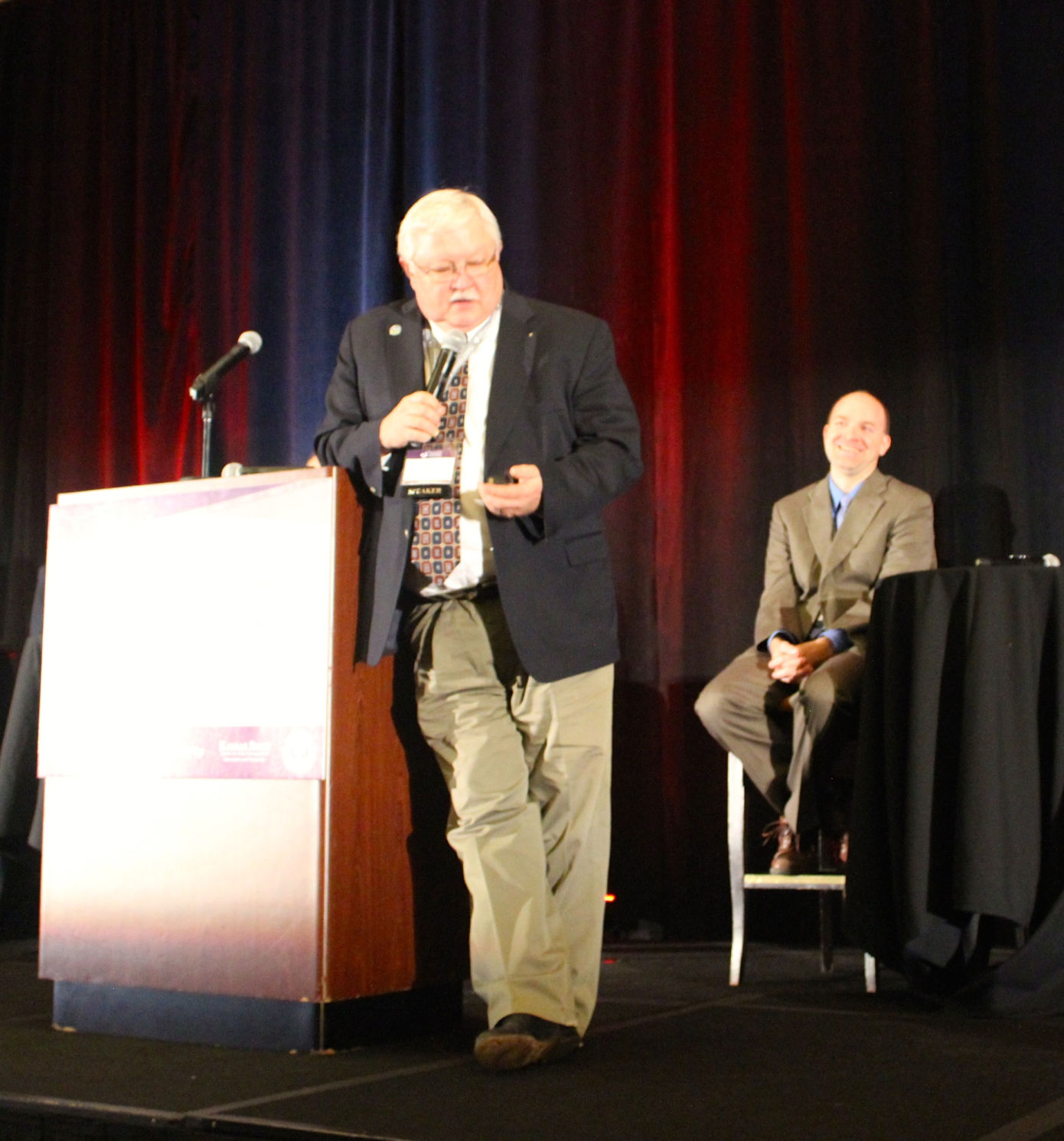Futures and cash markets need to work hand in hand like a firm handshake for the market to function properly. Thin cash trades in the livestock sector are causing that handshake to lose its grip.
“The industry has changed drastically over the last 10 years as it tries to meet changing consumer needs,” said Ted Schroeder, Kansas State University distinguished professor and director of the Center for Risk Management. “But as we have done that our marketing institutions are straining to keep up with the pace.”
Schroeder was part of a panel discussion on thinly traded cash markets for cattle and hogs at the 2018 Agricultural Commodity Futures conference held April 5 and 6 in Overland Park, Kansas.
Cash negotiated trades in the cattle industry have been trending down for several years. At one time cash negotiated trades made up 50 to 60 percent of the cattle trade on a week-to-week basis but this has declined to 20 to 25 percent. Cash trades have been replaced by formula pricing that relies on a negotiated cash price.
“It is not a bad thing necessarily that this is happening,” Schroeder said. “It is a reflection of an industry that is finding ways to do what it does better.”
The problem is the pace at which this change is occurring, he said. Another concern is that cash trade has not declined at an equal rate across the country. It is not uniform across the major cattle feeding regions.
“If we had a single price for negotiated cattle across the country it would not be an issue but we don’t,” Schroeder said.
When the negotiated cash trade is reduced and segmented the industry gets mixed price signals that might not be truly reflective on a day-to-day or week-to-week basis of the national fed cattle market.
Looking back at negotiated cash trade in the cattle industry from 2004 to 2017 Schroeder said Nebraska is the top region by volume of negotiated cash trades on a week-to-week basis. The Iowa-southern Minnesota region is second, Kansas is third and the Texas, Oklahoma, New Mexico region is last. Texas, Oklahoma and New Mexico represent only 2 to 3 percent of the total negotiated cash market.
Which negotiated cash prices are people using for futures trading? Schroeder said they are getting Nebraska and Iowa prices most of the time, Kansas prices occasionally and almost never getting prices from the Texas region.
“This increases volatility and uncertainty in the marketplace,” Schroeder said.
Glynn Tonsor, Extension specialist and professor of agricultural economics at Kansas State University, said futures contracts work well when you have a homogenous industry and there are no unknowns between what is being produced in the countryside and what is being traded. That is not the case with the livestock industry today.
“The livestock industry is becoming more differentiated,” Tonsor said. “The products that go to a white table cloth restaurant are not the same that go to a fast food restaurant and they are not the same as the products we sell overseas. Plus there is a whole mix of different production systems. It is my opinion that this is not going away and that we will have more opportunities for value-added products and more segmentation.”
Within the livestock space there is an increasing amount of production that does not align with the CME contract as well as it did at one time. This increases basis risk.
“Considering the core economics of consumer demand and the industry recognizing that as an opportunity to change will lead to more and more differentiated production systems that create a challenge for aligning with one single futures contract,” Tonsor said.
Pork market has tight cash trade
The pork industry dealt with very thin cash trade for many years. At times negotiated cash trade in the hog market was down to 2 to 4 percent of the total on a week-to-week basis.
What can be done to improve the connection between the futures market and negotiated cash trades?
Sign up for HPJ Insights
Our weekly newsletter delivers the latest news straight to your inbox including breaking news, our exclusive columns and much more.
Is it something like the Lean Hog Index developed by the pork industry. Steve Meyer, an economist with Kerns and Associates, said this has worked reasonably well for the pork industry. But will it translate to the beef industry?
Maybe something like the Fed Cattle Exchange would help. Jordan Levi, managing member of Arcadia Asset Management, LLC, is a co-founder of the Fed Cattle Exchange. The exchange is an eBay-like online cattle auction cattle. For $1 per head, producers could set a floor price and not be forced to sell if the price is not met. Part of the idea was to define the value for different classes of cattle from different regions in a transparent manner.
Is cross hedging part of the solution? Cross hedging is an investment strategy that involves taking a position on a commodity followed by an equal but opposite futures position on a different commodity with similar price movements. This would be like using soybean futures to hedge fish meal or corn futures to hedge grain sorghum.
Doug Rich can be reached at 785-749-5304 or [email protected].




